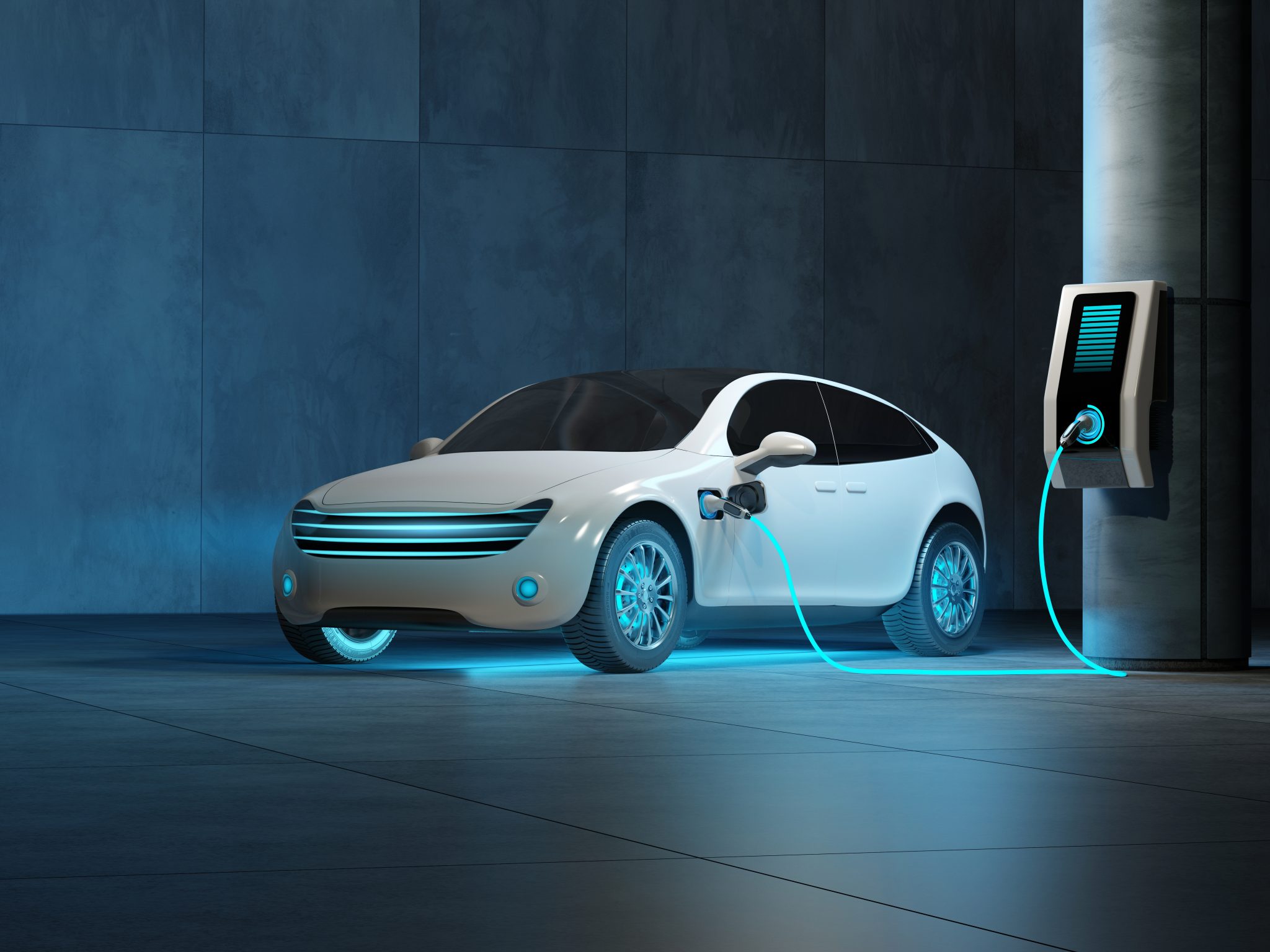China's Auto Industry: A Look At The Future Of Electric Vehicles

Table of Contents
Government Support and Policy
The Chinese government's commitment to EVs has been instrumental in the industry's phenomenal growth. This commitment manifests in various forms, creating a fertile ground for innovation and mass adoption.
Subsidies and Incentives
The Chinese government has implemented a range of generous subsidies and tax breaks designed to incentivize both EV buyers and manufacturers. These incentives have played a crucial role in boosting EV sales.
- National and Local Subsidies: Numerous national and local government programs offer direct financial incentives to consumers purchasing EVs, significantly lowering the upfront cost. These subsidies vary depending on the vehicle's range, battery capacity, and manufacturer.
- Tax Breaks: EV buyers also benefit from reduced purchase taxes and other tax advantages, further enhancing affordability.
- Impact on Sales: The correlation between government support and EV market growth is undeniable. Data shows a significant surge in EV sales following the introduction and expansion of these incentive programs. The phasing out of some subsidies in recent years has demonstrated their initial impact and the ongoing need for further policy support in maintaining the growth trajectory.
Infrastructure Development
China's massive investment in charging infrastructure is another critical factor driving EV adoption. The country is rapidly expanding its network of public charging stations, addressing one of the major barriers to widespread EV ownership.
- Charging Station Growth: The number of public charging stations in China has grown exponentially in recent years, with the government setting ambitious targets for further expansion. This includes a mix of fast-charging stations and slower charging options to cater to diverse needs.
- Government Initiatives: Government initiatives, including financial incentives for charging station construction and standardization efforts, are ensuring the rapid development of a robust charging network.
- Charging Technologies: China is actively developing and deploying various charging technologies, including AC charging, DC fast charging, and wireless charging, ensuring compatibility with different EV models.
Emission Standards and Regulations
Increasingly stringent emission regulations are pushing traditional automakers to prioritize EV production. These regulations are creating a favorable environment for the growth of the EV sector.
- Stringent Emission Standards: China's increasingly strict emission standards for vehicles are forcing automakers to reduce their reliance on gasoline and diesel vehicles. Failure to meet these standards can result in hefty fines.
- Impact on Traditional Manufacturers: These regulations are putting pressure on traditional car manufacturers to invest heavily in EVs to remain competitive. Many established automakers are now establishing joint ventures and investing heavily in their electric vehicle lines to meet this increased demand.
- Shaping the Future: Emission regulations are acting as a powerful catalyst, driving the transition to a more sustainable automotive industry and shaping the future landscape of China's auto sector.
Technological Advancements and Innovation
China's rapid progress in EV technology is another key driver of its market dominance. Significant breakthroughs in battery technology and autonomous driving are playing a crucial role.
Battery Technology
Advancements in battery technology are crucial for improving the range, charging time, and affordability of EVs. China is at the forefront of these advancements.
- Key Players: China boasts several key players in battery production, such as CATL and BYD, which are global leaders in battery technology and production capacity. These companies are constantly innovating and improving battery chemistry, leading to increased energy density and longer battery life.
- Breakthroughs in Battery Chemistry: Chinese companies are making significant breakthroughs in battery chemistry, leading to improved energy density, faster charging times, and reduced costs.
- Solid-State Batteries: Research and development efforts in solid-state battery technology are also gaining momentum, promising even greater improvements in battery performance and safety in the near future.
Autonomous Driving Technology
China is making significant strides in autonomous driving technology, with both government support and private investment fueling innovation.
- Key Companies: Several Chinese companies are at the forefront of autonomous vehicle development, utilizing AI and machine learning to enhance safety and efficiency.
- Government Regulations: The Chinese government is actively developing regulations to govern the testing and deployment of autonomous vehicles, fostering innovation while ensuring safety.
- AI and Machine Learning: Artificial intelligence and machine learning are integral to the advancements in autonomous driving technology, enabling sophisticated sensor fusion, decision-making, and navigation capabilities.
Domestic EV Manufacturers
The rise of successful domestic Chinese EV brands is another significant factor driving the country's EV revolution. These brands are often more competitive on price and offer innovative features.
- Prominent Brands: Chinese brands such as NIO, Xpeng, and Li Auto have gained significant market share and are rapidly expanding their product lines and global reach.
- Global Expansion: These brands are increasingly targeting international markets, leveraging their technological advantages and competitive pricing to challenge established global automakers.
- Unique Selling Points: Many Chinese EV brands are emphasizing unique selling propositions such as advanced connectivity features, superior battery technology, and innovative design to attract customers.
Consumer Demand and Market Trends
The increasing demand for EVs in China is driven by various factors, including a growing middle class, rapid urbanization, and rising environmental awareness.
Growing Middle Class and Urbanization
China's expanding middle class and rapid urbanization are creating a massive market for personal vehicles, with EVs becoming increasingly attractive.
- Car Ownership: With rising disposable incomes, more Chinese citizens are purchasing cars, and a significant portion are opting for EVs due to their cost-effectiveness and environmental benefits.
- Urban Population Growth: The concentration of population in urban areas, often characterized by traffic congestion and air pollution, makes EVs an appealing solution for daily commuting.
- Consumer Preferences: Chinese consumers are increasingly prioritizing convenience, technology, and environmental sustainability, which further enhances the appeal of EVs.
Pricing and Affordability
The pricing strategies of EV manufacturers are crucial for determining market accessibility. Government subsidies and technological advancements are making EVs increasingly affordable.
- EV vs. Gasoline Car Prices: While EVs were initially more expensive than comparable gasoline cars, the price gap is narrowing thanks to government subsidies and decreasing battery costs.
- Effect of Subsidies: Government subsidies have played a pivotal role in making EVs more accessible to a wider range of consumers.
- Leasing and Financing: The availability of leasing and financing options is further expanding affordability and making EV ownership more attainable.
Environmental Concerns and Awareness
Growing environmental awareness among Chinese consumers is significantly influencing EV adoption. Air pollution in many cities is a powerful motivator for cleaner transportation options.
- Public Perception: Public awareness of air pollution and the environmental benefits of EVs is increasing, positively impacting consumer choices.
- Government Campaigns: Government campaigns promoting environmental protection and sustainable transportation are further contributing to this shift.
- Clean Energy Vehicles: The desire for cleaner energy vehicles is a key driver of the demand for electric vehicles in China.
Conclusion
China's electric vehicle industry is experiencing explosive growth, fueled by a potent combination of government support, technological innovation, and rising consumer demand. The future of electric vehicles is inextricably linked to China's continued success in this dynamic market. The country's advancements in battery technology, autonomous driving, and the rise of successful domestic EV brands are reshaping the global automotive landscape. To stay informed about the latest developments and opportunities within this transformative sector, continue to follow news and analysis focusing on China's electric vehicles. Learn more about the future of China's electric vehicles and the ongoing advancements in this rapidly evolving industry.

Featured Posts
-
 Deion Sanders Explains Shedeurs Athletic Prowess Beyond Speed
Apr 26, 2025
Deion Sanders Explains Shedeurs Athletic Prowess Beyond Speed
Apr 26, 2025 -
 Nyt Spelling Bee Solutions February 5th Puzzle 339 Hints And Answers
Apr 26, 2025
Nyt Spelling Bee Solutions February 5th Puzzle 339 Hints And Answers
Apr 26, 2025 -
 F1 Star Lando Norris Suffers Unusual Injury Following Party
Apr 26, 2025
F1 Star Lando Norris Suffers Unusual Injury Following Party
Apr 26, 2025 -
 Love Islands Nepo Babies A Comprehensive Ranking And Analysis
Apr 26, 2025
Love Islands Nepo Babies A Comprehensive Ranking And Analysis
Apr 26, 2025 -
 The Closure Of Anchor Brewing Company A Look Back At Its Legacy
Apr 26, 2025
The Closure Of Anchor Brewing Company A Look Back At Its Legacy
Apr 26, 2025
Latest Posts
-
 Figma Vs Adobe Word Press And Canva The Impact Of Its New Ai Features
May 10, 2025
Figma Vs Adobe Word Press And Canva The Impact Of Its New Ai Features
May 10, 2025 -
 Covid 19 Testing Scandal Lab Owner Convicted Of Falsifying Results
May 10, 2025
Covid 19 Testing Scandal Lab Owner Convicted Of Falsifying Results
May 10, 2025 -
 Lab Owner Admits To Falsifying Covid Test Results During Pandemic
May 10, 2025
Lab Owner Admits To Falsifying Covid Test Results During Pandemic
May 10, 2025 -
 Ryujinx Emulator Project Halted After Alleged Nintendo Intervention
May 10, 2025
Ryujinx Emulator Project Halted After Alleged Nintendo Intervention
May 10, 2025 -
 Nintendos Action Leads To Ryujinx Emulators Development Cessation
May 10, 2025
Nintendos Action Leads To Ryujinx Emulators Development Cessation
May 10, 2025
